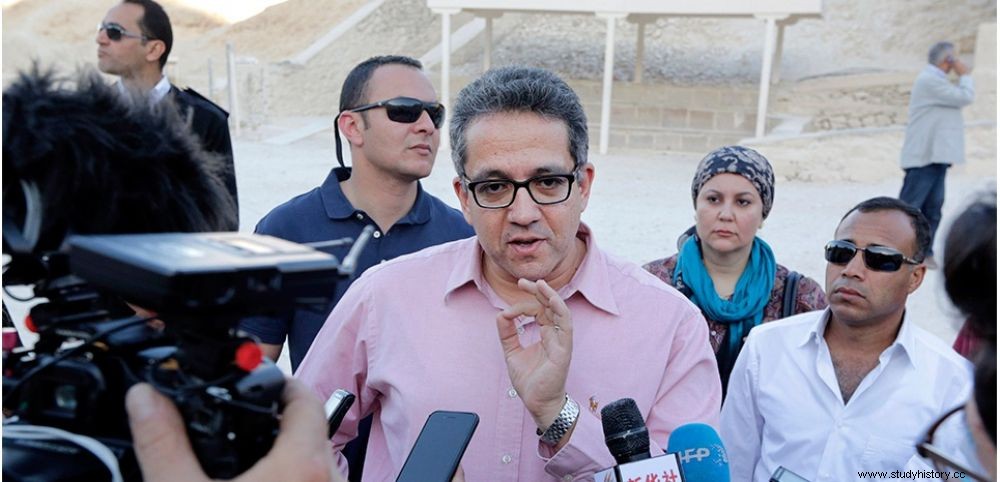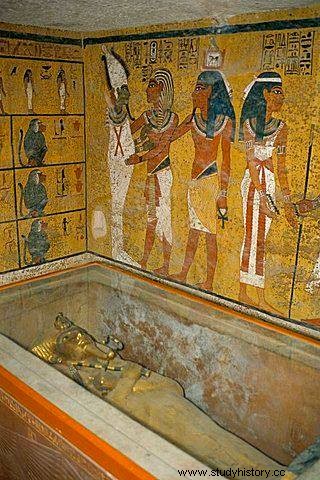 Khaled al-Anani, Minister of Egyptian Antiquities, March 31, 2016, in front of Tutankhamun's tomb (KV62) , in the Valley of the Kings, near Luxor, Egypt.
Khaled al-Anani, Minister of Egyptian Antiquities, March 31, 2016, in front of Tutankhamun's tomb (KV62) , in the Valley of the Kings, near Luxor, Egypt. After a new series of radar checks carried out on Thursday March 31st in the tomb of Tutankhamun (KV62) in the Valley of the Kings, Egypt, the brand new Egyptian Minister of Antiquities, Khaled al-Anani, released - as planned - a first balance sheet this 1 st april. Result:a commission of experts should meet in May to take stock of all the data collected. We'll have to wait again to find out the last secrets that the child-king's burial chamber could conceal!
During a press conference, the minister first said that the preliminary results obtained after ten hours of radar readings were not in contradiction with those carried out a few weeks ago by the Japanese expert Hirokatsu Watanabe. In other words, the remarks made on March 17 by his predecessor Mamdouh el-Damati ensuring a presence "at 90%" of "two cavities behind the west and north walls of the burial chamber" , as well as "metallic" materials and "organic , are not denied. A press release, issued at the same time by the Egyptian Ministry of Antiquities, confirmed that anomalies had indeed been detected.

Funerary chamber of the tomb of Tutankhamun, in the Valley of the Kings, in Egypt. CREDIT:Ministry of Antiquities.
Wanting to be more cautious, the minister however announced that other surveys would still be carried out at the end of April, including outside the tomb, before considering any new stage. Only examinations resulting in "a favorable result would allow the drilling of a hole of "1 inch" (2.5cm) to allow a fiber optic camera to pass through and reach the possible cavity, "this work must not damage the tomb or its paintings ". He therefore also specified that all the data obtained would be discussed at an international conference made up of experts from Tutankhamun which should meet in early May in Egypt.
Came on site from Thursday, March 31, 2016 in the company of the British Egyptologist Nicholas Reeves - the author of the hypothesis of the possible presence of another burial in the tomb of Tutankhamen and a whole team of Egyptian engineers and Americans - Khaled al-Anani has never hidden that he refused any haste in the investigations. Egyptologist by training, former director of the Egyptian Museum in Cairo and of the new Grand Egyptian Museum (GEM) located near the Pyramids of Giza - the opening of which is announced soon - he is in fact in favor of an approach that is more scientific than media-based.
The latest readings were taken using a GSSI-type ground-penetrating radar using wave frequencies ranging from 400 to 900 MHz. The indication of these frequencies is important, because in radar imagery, the more one works with high frequencies, the more details one obtains in resolution.
